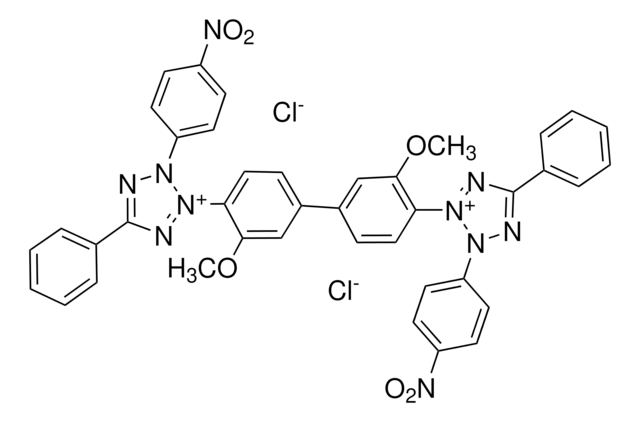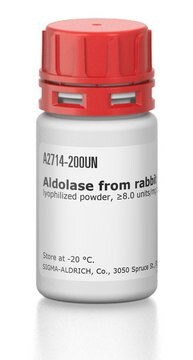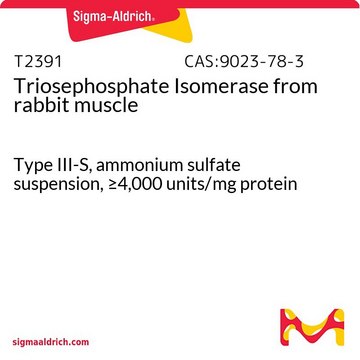G2267
Glyceraldehyde-3-phosphate Dehydrogenase from rabbit muscle
lyophilized powder, ≥75 units/mg protein
Synonym(s):
D-Glyceraldehyde 3-phosphate:NAD+ oxidoreductase (phosphorylating), GAPDH
About This Item
Recommended Products
biological source
rabbit muscle
form
lyophilized powder
specific activity
≥75 units/mg protein
composition
Protein, ≥80% biuret
foreign activity
3-Phosphoglyceric phosphokinase ≤0.05%
lactic dehydrogenase, myokinase, and pyruvate kinase ≤0.01%
triosephosphate isomerase ≤0.1%
shipped in
wet ice
storage temp.
−20°C
Looking for similar products? Visit Product Comparison Guide
Related Categories
General description
Application
- for measurements of glyceraldehyde-3-phosphate dehydrogenase (GAPDH) activity assay
- to generate a linear standard curve to analyse GAPDH activity in the experimental samples collected from mice
- in anti-aggregation assays
- in purified GAPDH studies
Biochem/physiol Actions
Unit Definition
Physical form
inhibitor
Storage Class Code
11 - Combustible Solids
WGK
WGK 3
Flash Point(F)
Not applicable
Flash Point(C)
Not applicable
Personal Protective Equipment
Regulatory Listings
Regulatory Listings are mainly provided for chemical products. Only limited information can be provided here for non-chemical products. No entry means none of the components are listed. It is the user’s obligation to ensure the safe and legal use of the product.
JAN Code
G2267-BULK:
G2267-5KU:
G2267-EW:
G2267-1KU:
G2267-10KU:
G2267-500UN:
G2267-VAR:
Certificates of Analysis (COA)
Search for Certificates of Analysis (COA) by entering the products Lot/Batch Number. Lot and Batch Numbers can be found on a product’s label following the words ‘Lot’ or ‘Batch’.
Already Own This Product?
Find documentation for the products that you have recently purchased in the Document Library.
Customers Also Viewed
Articles
Glucose metabolism is regulated by the opposing actions of insulin and glucagon. Insulin is released from pancreatic ß cells in response to high blood glucose levels and regulates glucose metabolism through its actions on muscle, liver, and adipose tissue.
Our team of scientists has experience in all areas of research including Life Science, Material Science, Chemical Synthesis, Chromatography, Analytical and many others.
Contact Technical Service











